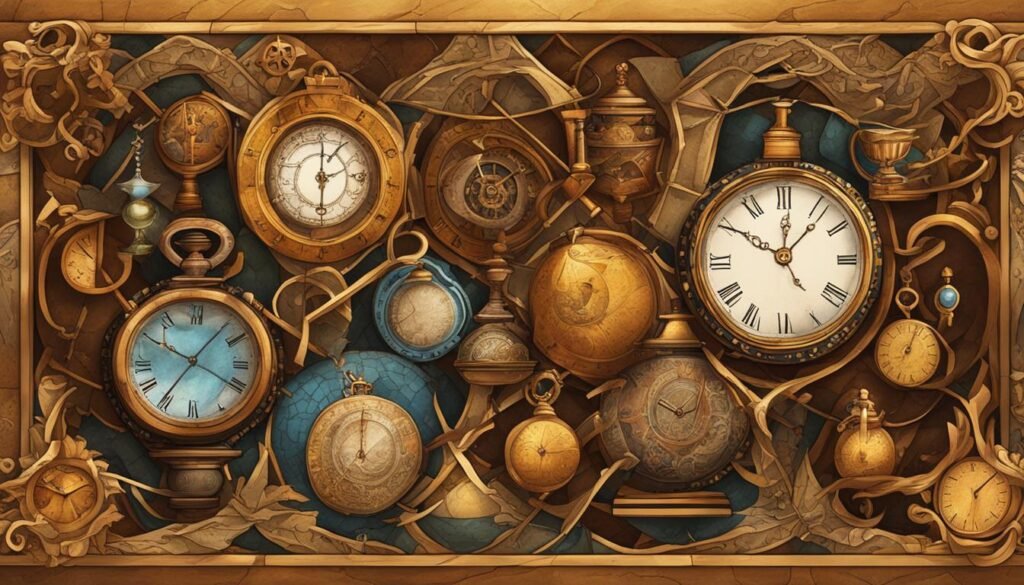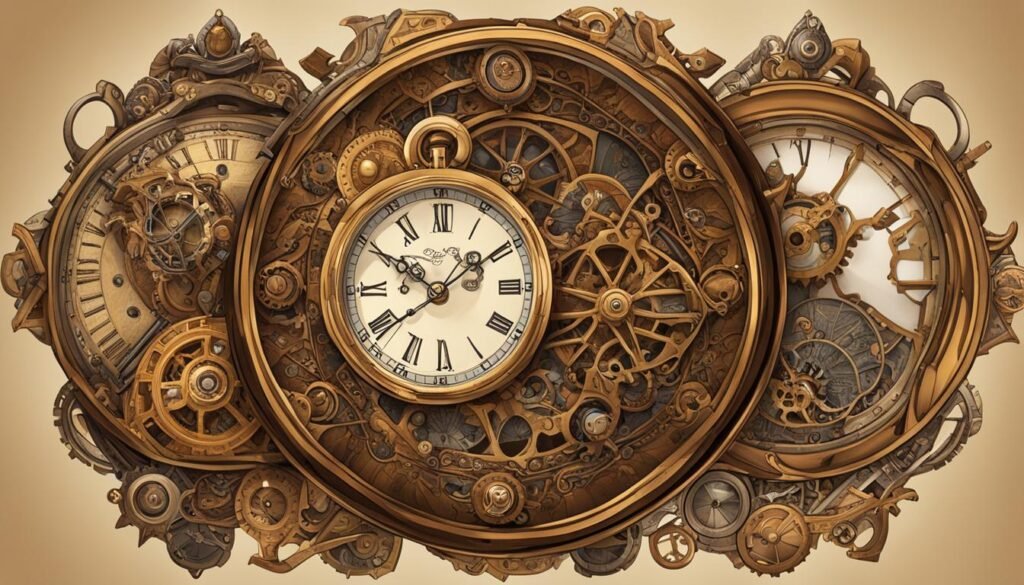Have you ever wondered about the significance of watches in the Bible? The mention of watches in religious texts holds a deeper meaning than just timekeeping. In this article, we will explore the number of watches mentioned in both the Old and New Testaments, shedding light on their historical context and spiritual significance.
Key Takeaways:
- The Bible mentions different watches during the night when watchmen relieved each other.
- In the Old Testament, there were originally three watches: the beginning of the watches, the middle watch, and the morning watch.
- The New Testament introduced the Roman division of four watches: even, midnight, cock-crowing, and morning.
- Understanding the concept of biblical watches helps us grasp the historical context and significance of these divisions of the night.
- The watches symbolically represent periods of darkness and the importance of remaining watchful.
The Old Testament Watches
In the Old Testament, the night was divided into three watches. These watches served as periods of time during the night when watchmen relieved each other and were primarily used for military purposes and to warn of approaching enemies. The first watch, also known as “the beginning of the watches,” started at sunset and lasted until around 10 p.m. It marked the beginning of the night and the first shift of watchmen. The second watch, called “the middle watch,” began at 10 p.m. and ended at around 2 a.m. This watch symbolized the darkest hours of the night, when extra vigilance was required. The third watch, known as “the morning watch,” lasted from 2 a.m. until sunrise and marked the final shift change as the night came to an end.
These divisions of the night in the Old Testament were rooted in the practical need for watchmen to be alert and watchful during specific periods. By dividing the night into watches, the community ensured that there was always someone keeping watch, ready to sound the alarm if necessary. The concept of watches in the Old Testament demonstrates the importance of remaining vigilant and prepared for any potential threat or danger.
Understanding the Old Testament watches provides valuable insight into the historical context of biblical events and the significance of night divisions during ancient times. These watches not only served practical purposes but also held symbolic meaning, representing the constant need for spiritual alertness and readiness for the coming of light in the darkness.
Table: The Old Testament Watches
| Watch | Time |
|---|---|
| The Beginning of the Watches | Sunset until around 10 p.m. |
| The Middle Watch | 10 p.m. until around 2 a.m. |
| The Morning Watch | 2 a.m. until sunrise |

The New Testament Watches
In the New Testament, a shift in the number of watches is mentioned, influenced by the Romans. The division of night watches expanded to four, introducing a new way of organizing the night. These four watches are even, midnight, cock-crowing, and morning.
The even watch began at sunset and lasted for three hours, providing a period of heightened alertness during the early evening. The midnight watch followed, spanning from midnight until 3 a.m. This watch marked the deepest stretch of the night, emphasizing the need for watchfulness and preparedness. At 3 a.m., the cock-crowing watch began, lasting until 6 a.m. This watch signaled the approaching dawn, a time of transition and anticipation. Finally, the morning watch extended from 6 a.m. until sunrise, signifying the start of a new day.
These four watches are referenced in various passages throughout the New Testament, serving as a metaphor for remaining watchful in spiritual and worldly matters. They symbolize the importance of vigilance and readiness, especially in anticipating the arrival of important events or figures.

The New Testament Watches
| Watch | Time |
|---|---|
| Even | From sunset to three hours after |
| Midnight | From midnight to 3 a.m. |
| Cock-crowing | From 3 a.m. to 6 a.m. |
| Morning | From 6 a.m. to sunrise |
The division into four watches in the New Testament reflects the influence of the Romans. It provided a more detailed and specific way of organizing the night, highlighting different stages and transitions. By understanding the significance of these watches, readers can gain a deeper insight into the context and meaning behind the references in the New Testament.
Conclusion
The watches mentioned in the Bible hold great significance in understanding the historical context and the call to remain watchful. In the Old Testament, there were three watches referred to as the beginning of the watches, the middle watch, and the morning watch. These watches played a crucial role in military strategies, keeping a close eye on enemies, and signaling imminent dangers.
In the New Testament, the Roman influence introduced a division of four watches, symbolizing different periods of darkness and anticipation. The even, midnight, cock-crowing, and morning watches emphasized the need to stay vigilant and prepared for the arrival of the Son of Man. These watches served as a reminder to remain watchful in the face of spiritual challenges and to stay connected to God.
Understanding the biblical concept of watches helps illuminate the deeper meaning behind the night divisions and their relevance to our lives today. They serve as a reminder to be alert, discerning, and prayerful during times of darkness or uncertainty. By embracing the principles of the watches, we can navigate through the challenges of life with spiritual wisdom and readiness.
FAQ
How many watches are there in the Bible?
The Bible refers to watches as the periods during the night when watchmen relieved each other. In the Old Testament, there were originally three watches: the beginning of the watches, the middle watch, and the morning watch. However, in the New Testament, there are references to four watches, likely introduced by the Romans. The watches were originally divided based on the time between sunset and sunrise.
What were the watches in the Old Testament?
In the Old Testament, the night was divided into three watches. The first watch, also known as “the beginning of the watches,” started at sunset and lasted until around 10 p.m. The second watch, called “the middle watch,” began at 10 p.m. and ended at around 2 a.m. The third watch, known as “the morning watch,” lasted from 2 a.m. until sunrise. These watches were primarily used for military purposes and to warn of approaching enemies.
How were the watches divided in the New Testament?
In the New Testament, there is a shift in the number of watches mentioned. The Roman influence introduced a division of four watches. These were referred to as even, midnight, cock-crowing, and morning. The even watch began at sunset and continued for three hours. The midnight watch lasted from midnight to 3 a.m. The cock-crowing watch started at 3 a.m. and ended at 6 a.m. The morning watch extended from 6 a.m. until sunrise. These four watches are mentioned in various passages in the New Testament, emphasizing the importance of remaining watchful.
What is the significance of the biblical watches?
The watches in the Bible played a crucial role in military strategies and the call to be vigilant. The Old Testament initially had three watches, while the New Testament introduced the Roman division of four watches. These watches symbolically represent different periods of darkness and the anticipation of the arrival of the Son of Man. Understanding the biblical concept of watches helps to grasp the historical context and significance of these divisions of the night.

I’m Benjamin, a passionate spiritual seeker and creator of Verses and Prayers. Alongside my girlfriend Emma and our pet lizard Mulle, I cherish family life, enjoy exploring new places, and am deeply involved in my church community. My love for reading and singing biblical verses inspires every aspect of my journey.

